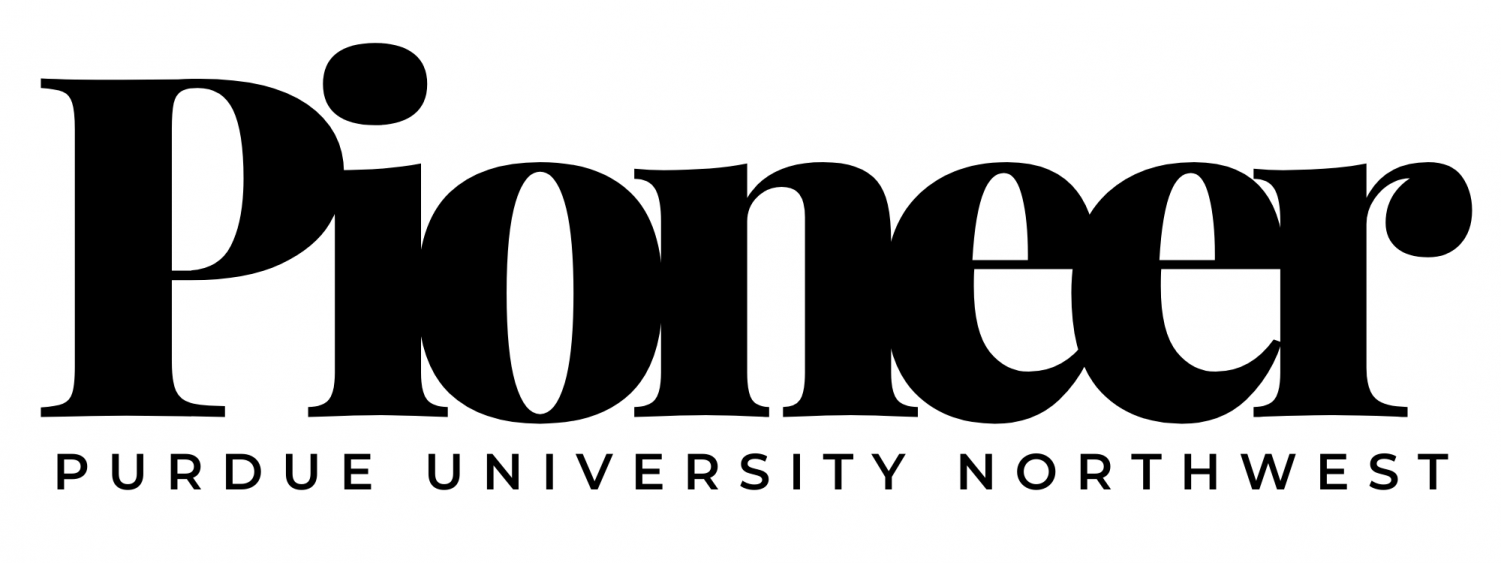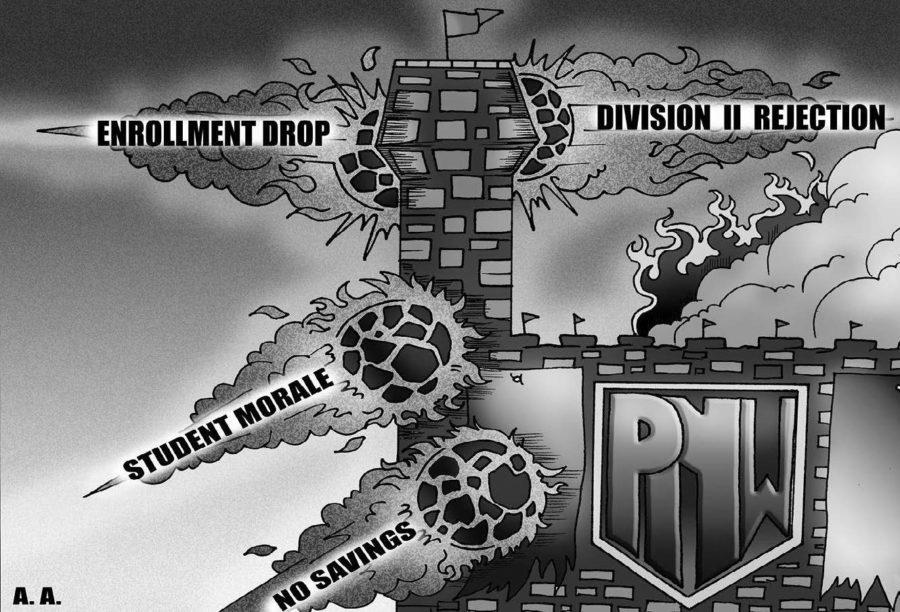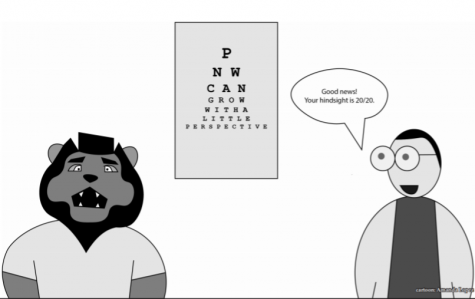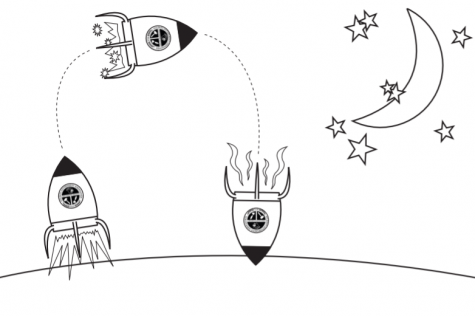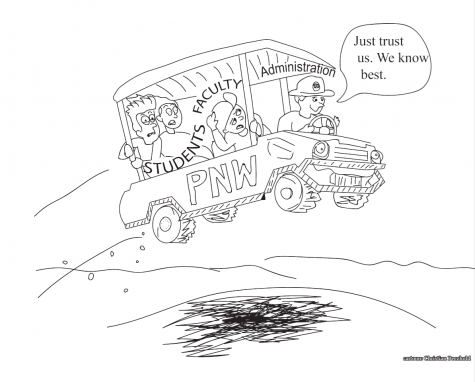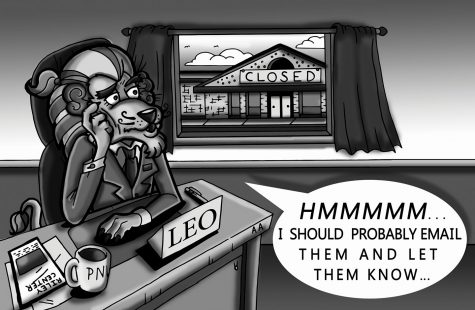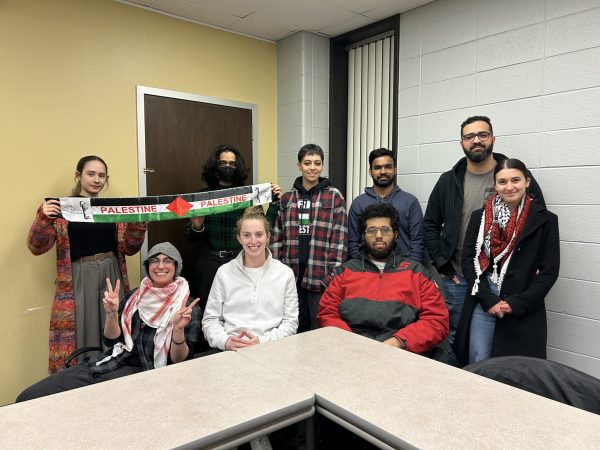Editorial: Sinking before setting sail
Throughout the summer, and really from the start of unification, current and prospective students, faculty and staff have shown little faith in PNW. At first, this seemed like too quick of a judgment, as we had two years to plan out and successfully accomplish a smooth transition from Purdue University Calumet and Purdue University North Central to Purdue University Northwest. As time got closer and closer to the unification deadline of July 1, 2016, though, smooth or even successful sailing appeared less and less likely.
On July 15, the NCAA denied PNW’s application to enter Division II, an achievement that the Athletic Department of PUC had been trying to accomplish since before unification was conceived. The application was denied because of the same uncertainty of whether or not PNW would be successful, with added concern that entering a much larger division could do more harm than good.
These thoughts were expressed by other members of the university as well, so much so that on Feb. 12, the Faculty Senate Committee of PNC voted to have PUC rescind the application to enter Division II. The committee had concerns about the average travel distance of 275 miles to games for student athletes, and PNC students agreed with these concerns and also took issue with the choice of coaches for PNW.
Instead of heeding the warning, when a unified PNW Athletics Committee was formed to discuss the issues with moving to Division II, it was ultimately decided to continue the goals of Division II that had already been set into motion.
With a majority of our time leading up to unification spent focusing on things like mascots, mission statements and our athletic department, the importance of the actual framework necessary for each department to have enough time to ensure the new university would function efficiently seemed like a low priority at best. Even with less than a week before the start of the semester, some classes were still being dropped or shifted around, which made signing up for classes a chaotic nightmare.
More problems such as these became apparent during the summer, particularly with enrollment. Although the exact numbers will not be known until September, enrollment is supposed to be down considerably between the two campuses, and the original forecast of approximately 16,000 students between the two will not be achieved.
The editorial board of The Pioneer is comprised of students that include everyone from incoming freshmen to graduate students. Those who have experienced unification since it was announced in February of 2014 have seen the reasoning behind unification change from the initial motive of saving money to simply becoming an “academic powerhouse.”
From a student’s perspective, saving money sounds far more appealing, as savings could have meant a refurbished university, more student organization resources or even the inclusion of more courses and majors that would have helped us obtain the title of “academic powerhouse” in the first place. When students and faculty learned that unification savings would not be as much as anticipated, it was a bitter pill to swallow.
While the university has addressed and fixed some complaints, the ones that have been addressed seem absolutely mandatory in maintaining the lowest amount of student satisfaction. These include not making it required for students to have to leave their preferred campus in order to complete their degree, providing a shuttle system for athletes to be able to travel between campuses and establishing a new attendance policy allowing athletes to miss a certain amount of classes depending on their games and practices.
That being said, very little has been done to try and reassure students and faculty that they should actually be confident in their university. This is a huge problem, as confidence is a key component in increasing enrollment and ensuring student retention. If all we currently have to show for our unification efforts after all this planning is an intimidating looking lion and some nicer athletic facilities with dwindling Division II prospects, then it may be difficult to stop more students and faculty from jumping ship with the others if something isn’t done soon.

